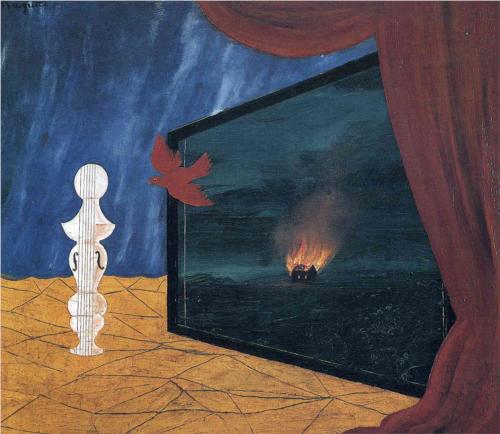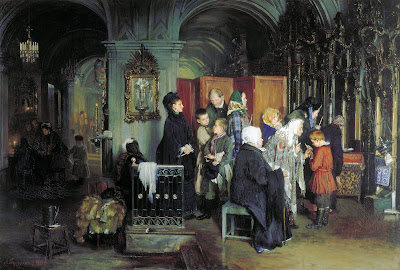In 2009, I published
a translation of Roberto Bolaño's "Abandon everything again: First Infrarealist manifesto," written in 1976. Since then, I have learned that this "first" manifesto was preceded by two others, both written in 1975: one by José Vicente Anaya, and another by Mario Santiago Papasquiaro (see
here and
here).
What follows is a translation of Mario Santiago's manifesto. The original can be found, for example,
here. Anaya's manifesto can also easily be found at that site; a translation may be forthcoming on this blog.
Semi-relatedly, there is a recording of Mario Santiago reading one of his poems (in Spanish)
here.
Infrarealist Manifesto
WHAT DO WE PROPOSE?
NOT MAKING A JOB OF ART
SHOWING THAT EVERYTHING IS ART AND THAT THE WHOLE WORLD CAN MAKE IT
BEING INTERESTED IN "INSIGNIFICANT" THINGS / WITHOUT INSTITUTIONAL VALUE
/ PLAYING / ART MUST BE UNLIMITED IN QUANTITY, ACCESSIBLE
TO EVERYONE, AND IF POSSIBLE CREATED FOR EVERYONE
¡!!!!!!!!!!!!!!!!!!!!!!!!!!!!!!!!!!!!!!!!!!!!!!!!!!!!!!!!!!!!!!!
CONTRADICTING ART / CONTRADICTING EVERYDAY LIFE (DUCHAMP) IN A
TIME THAT SEEMS ALMOST TOTALLY BLOCKED FOR
PROFESSIONAL OPTIMISTS
TRANSFORMING ART / TRANSFORMING EVERYDAY LIFE (US)
CREATIVITY / LIFE MISALIGNED AT ALL COSTS
(MOVING OUR HIPS TO THE PRESENT WHILE BATTING OUR EYELASHES
FROM THE AIRPORTS OF THE FUTURE)
IN A TIME WHEN MURDERS HAVE BEEN DISGUISING
SUICIDES
$$$$$$$$$$$$$$$$$$$$$$$$$$$$$$$$$$$$$$$$$$
CONVERTING CONFERENCE ROOMS INTO FIRING RANGES1
(FESTIVAL INSIDE A FESTIVAL / WOULD DEBRAY SAY?2
%%%%%%%%%%%%%%%%%%%%%%%%%
BEETHOVEN, RACINE & MIGUEL ÁNGEL STOP BEING THE MOST USEFUL
THE MOST ADDICTIVE3, THE MOST NOURISHING: THE SOUND
BARRIERS THE SPEED LABYRINTHS (OH JAMES DEAN!4) ARE BEING
BROKEN INTO SOMETHING ELSE
“”””””””””””””””””””””””””””””””””””””””””””””””
TAKING PEOPLE OUT OF THEIR DEPENDENCE & PASSIVITY
SEARCHING FOR UNPRECEDENTED MODES OF INTERVENING IN & DETERMINING THE WORLD
DEMYSTIFYING / TURNING INTO AGITATORS
NOTHING HUMAN IS FOREIGN TO US (GOOD) NOTHING UTOPIAN IS FOREIGN TO US
(SUPERGOOD)
+++++++++++++++++++++++++++++++++++++++
AT THIS MOMENT MORE THAN EVER BEFORE, THE PROBLEM OF ART
CANNOT BE THOUGHT OF AS AN INTERNAL STRUGGLE BETWEEN CONTINGENTS /
BUT ABOVE ALL AS A TACIT (ALMOST DECLARED) STRUGGLE BETWEEN
THOSE WHO ARE CONSCIOUSLY OR UNCONSCIOUSLY WITH THE SYSTEM
AND TRY TO CONSERVE IT PROLONG IT / AND THOSE WHO ALSO CONSCIOUSLY
OR UNCONSCIOUSLY MAKE IT EXPLODE
…………………………………………………………
ART IN THIS COUNTRY HAS NOT GONE FURTHER THAN A CURSORY TECHNIQUE
FOR DECORATIVELY EXERCISING MEDIOCRITY
$$$$$$$$$$$$$$$$$$$$$$$$$$$$$$$$$$$$$$$$$$$$
"ONLY FREE MEN OF ANY STRIPE WILL BE ABLE TO CARRY THE FLAME FAR ENOUGH" (ANDRÉ BRETON)5
¡!!!!!!!!!!!!!!!!!!!!!!!!!!!!!!!!!!!!!!!!!!!!!!!!!!!!!!!!!!!!!!!!!!!!!!!!!!!!!!!!!!!!!!!!!!!!!!!!!!!!!!!!!!!!!!!!!
RETURNING TO ART THE NOTION OF A PASSIONATE AND CONVULSIVE LIFE
CULTURE IS NOT IN BOOKS OR IN PAINTINGS OR IN
STATUES IT'S IN THE NERVES / IN THE FREE FLOW OF THE NERVES
A CLEARER STATEMENT: AN EMBODIED CULTURE / A CULTURE IN
FLESH, IN SENSIBILITY (THIS OLD DREAM OF ANTONIN ARTAUD)
555555555555555555555555555555555555555555555555555555555555555555555
EVERYTHING THAT EXISTS:
THE FIELD OF OUR ACTIVITY / AND THE FRENETIC SEARCH FOR
WHAT STILL DOESN'T EXIST
…………………………………………………………………………………………………….
OUR PURPOSE IS (THE TRUTH) PRACTICAL SUBVERSION
&&&&&&&&&&&&&&&&&&&&&&&&&&&&&&&&&&&&&&&&&&&&&&&&&
EXAMPLE OF TOTAL ART
TOTAL SCULPTURE (AND WITH MOVEMENT): A MANIFESTATION OF 10,000
TO 20,000 PEOPLE SUPPORTING THE STRIKE OF THE DEMOCRATIC ELEMENT
OF SUTERM6
TOTAL MUSIC: TRIPPING MUSHROOMS IN THE SIERRA MAZTECA
TOTAL PAINTING: CLAUDIA KERIK BACKWARDS AND FORWARDS / I INSIST:
BACKWARDS AND FORWARDS
TOTAL POETRY: THIS INTERVIEW DISSEMINATED TELEPATHICALLY OR WITH
THE ONLY MOVEMENT OF MY HAIR (AN AFRICAN LION'S) AND ALL ITS
ELECTRIC DISCHARGE
3333333333333333333333333333333333333333333333333333333333333333333333
WORLDS WAVES PEOPLE WHO INTEREST ME:
NICANOR PARRA CATULLUS QUEVEDO LAUTRÉAMONT MAGRITTE CHIRICO ARTAUD
VACHÉ JARRY BRETON BORIS VIAN BURROUGHS GINSBERG KEROUAC KAFKA
BAKUNIN CHAPLIN GODARD FASSBINDER ALAIN TANNER FRANCIS BACON
DUBUFFET GEORGE SEGAL JUAN RAMÍREZ RUÍZ VALLEJO EL CHÉ GUEVARA
ENGELS "THAT MASTER OF SARCASM" THE PARIS COMMUNE THE
SITUATIONIST INTERNATIONAL THE EPIC OF THE CASTAWAYS OF THE GRANMA (THEY FORGOT ME): HEIRONYMUS BOSCH (THE UNMISSABLE)
WILHELM REICH THE APORNOGRAPHIC MYSTICISM OF CHARLES MAGNUS THE
MULTICOLORED EROTICA OF TOM WESSELMAN JOHN CAGE JULIAN BECK JUDITH
MALINA & HER LEAVING THEATER (AND TO CONCLUDE) THE MARQUIS DE
SADE HECTOR APOLINAR ROBERTO BOLAÑO JOSÉ REVUELTAS (AND HIS
DISCOVERY THAT THE DIALECTIC SOMETIMES WALKS LIKE
A CRAB) JUDITH GARCÍA CLAUDIA SOL (AND EVEN ON CLOUDY DAYS)
CLAUDIA SOL
%%%%%%%%%%%%%%%%%%%%%%%%%%%%%%%%%%%%%%%%%%%%%%
WE CAN SHOOT 2 GUNS AT ONCE / I MEAN MORE THAN ONCE
BUFFALO BILL
STUPIDITY IS NOT OUR STRONG SUIT
(ALFRED JARRY DIXIT)
Notes
1. "STANS DE TIRO"
2. Jules Régis Debray; missing close parenthesis in the original
3. "LO MÁS ANFETAMÍNICO" - something like "the most like being addicted to meth"
4. In English in the original.
5. Where is this in Breton? I recognize it but I can't find it.
6. SUTERM was an electrical workers' union.

























